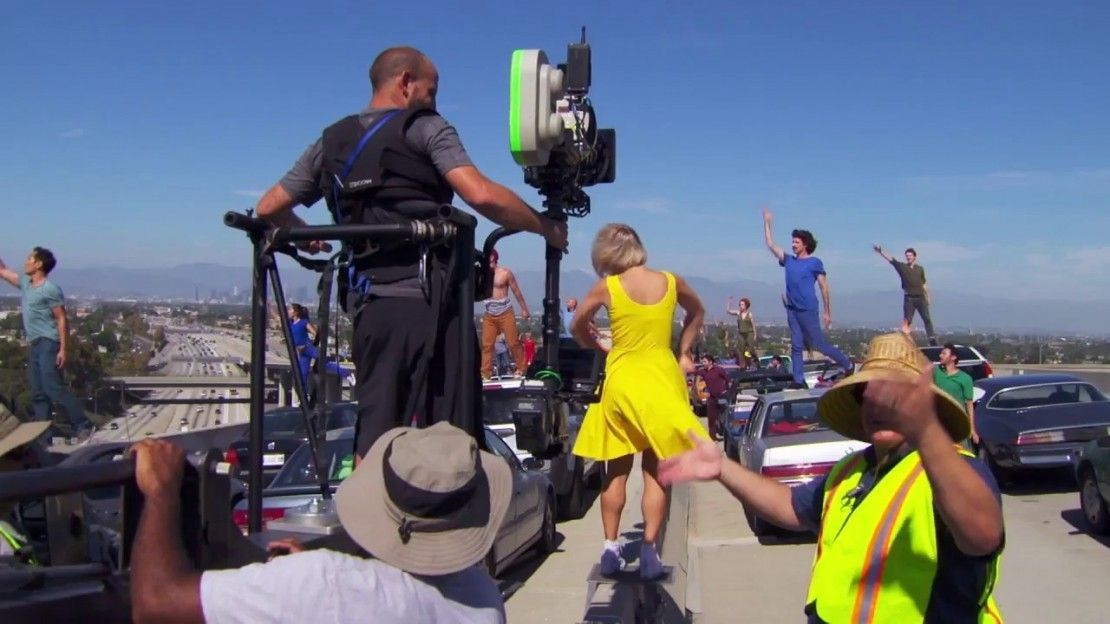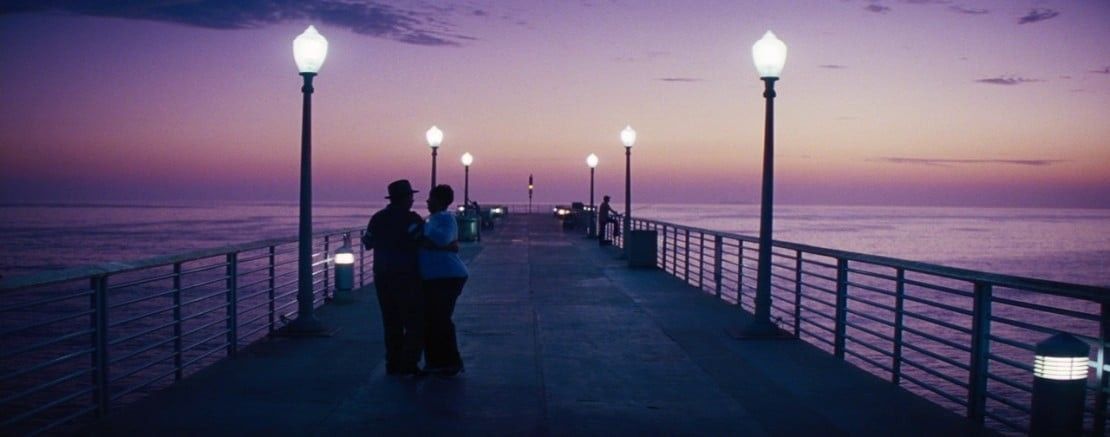
It's four years later, and we still can't get over how good La La Land looks.
Without a doubt, La La Land’s cinematography creates a dreamscape grounded in an old Hollywood Technicolor fantasy that I wish I lived in. It’s the way we all wish we could see Los Angeles instead of the very real version that so many filmmakers capture.
This fantasy Los Angeles can only work in the campy-musical world of La La Land. The film is mostly shot at magic hour (or golden hour), the time of day where the sun is at the horizon creating warm and soft light that is perfect for any outdoor shoot. So what was used to capture some of the best shots in the film?
Cinematography DB Fan #2 breaks down some of the scenes from La La Land and how they were created through camera work and the use of old-school and new-school Hollywood lighting. Check out the video below:
If you don't have 47 minutes to spare, here is what we picked up from the video!
Practice makes excellence
As I said earlier, a lot of this film’s scenes take place right at magic hour. The crew only has about thirty minutes to an hour to film what needs to be filmed. This means that there was a lot of rehearsing for the cast and crew.
Since La La Land was being shot with a Panavision Panaflex Millennium XL2 with an Anamorphic 2X lens on 35mm film, everything had to be done in as few takes as possible. The standard was one and done.
To make sure this was possible, many of the scenes were heavily rehearsed and shot on an iPhone to find all the marks that the camera needed to hit during the shoot. This was done for almost every scene, practicing for weeks before the actual shoot took place. When it came to dialogue-heavy scenes, two cameras were used to capture both actors at the same time. It’s a more expensive way to shoot, but you’re able to capture a genuine reaction from the actors.
For the opening number of the film, the whole scene is three takes stitched together for two days. Because the scene relied heavily on natural light, the sun had to be at the perfect angle so it wouldn’t create harsh lighting on the camera. The result was magic, making LA traffic look more fun than frustrating.

The magic is in the lens flares
Linus Sandgren knew that a lens flare could transform the scene from plain and mundane to the headspace of an LA dreamer. Every single lens flare in the film was completely intentional and completely controlled to make the scenes look great and portray the headspace of the characters.
When we first see Sebastian’s (Ryan Gosling) shabby apartment, we are met with dull and muted neutrals that don’t make the space feel very special. It isn’t until Sebastian starts to play the piano that a lens flare appears in the frame, and the space somehow feels magical. Sandgren marked the spot that the camera would be at a certain part in Sebastian’s song, and placed LED lights outside of the window that created the lens flare that we see in the scene.
There is also the movie theater scene when Mia (Emma Stone) meets up with Sebastian. The lens flare is subtle but comes from the projector as they notice each other from across the room. Sandgren uses that light source again to put us into these character’s minds, and transport the typical experience into something a little more theatrical.

There are a lot of whip pans for a good reason
There are a lot of whip pans in La La Land. Like, a lot. But they do serve their purpose. It was used to hide cuts like in the opening number or the party scene when the dancer jumps into the pool, or just for the sake of a sick transition, and some of these whips were done in a very simple way.
By now, you’ve probably watched the behind-the-scenes video of La La Land director, Damien Chazelle, tapping on the shoulder of a cameraperson while filming the jazz/tap dancing scene. The cameraperson stands there in a very uncomfortable twist until Chazelle taps his shoulder, then ducks below the camera as it moves to frame either Mia or Sebastian perfectly. To be honest, it’s such a cool way to transition between two actors rather than framing both of them at the same time or cutting to their character’s performance.
When the camera whips weren’t being done by the cameraperson, Sandgren chose to transition from a Steadicam shot to an arm crane shot. From there, the camera attached to the arm crane begins to spin almost out of control. The effect was simple and delivered a scene that still makes my head spin.

Old Hollywood movie lighting is still a go-to method
The beauty of shooting on film is that it picks up color beautifully without the need for a ton of color correction. Most of the night shots of LA are somewhat bright, and that’s due to digital cameras picking up the light from the city. Film picks up the shadows and highlights of the night and creates richness in a shot.
Most of the night shots relied on an old-school trick. The crew simply hid the light source behind trees or buildings to create the highlights needed on the street or certain buildings. When the light source wasn’t hidden, typical old-fashioned street lamps were the main light source. Being non-natives to the city, Chazelle and Sandgren had this idea of what LA looked like based on classic Hollywood cinema. The city had some of the street lights replaced with an older style that created a timeless look whenever Mia and Sebastian walked around during Magic Hour.
If you don’t have a mega-budget for your film to replace street lights, the normal street lights should work, too.

A little distortion never hurt anybody
Remember how I said that La La Land feels dreamlike? Well, there is a valid reason for that statement. The lens used for dreamlike shots, such as the Panavision E50 50 mm T2.O lens, distorts the edges of the frame ever so slightly. In pretty much any close-up shot of Mia or Sebastian, check out how the corners of the shot are bending and curving unnaturally. Yet, when we see the shot, the distortion isn’t overbearing or obvious at first glance. The slight distortion adds a subtle depth when it is used.
The Panavision makes everything feel soft and slightly out of focus. The audience isn’t forced to look at any certain thing, but rather the thing that captures our eye. The camera and lens used purposefully don’t create sharp images out of fear that if the image is too crisp, it will feel fake.

Even with a much smaller budget, creating something fantastic can be done through the use of old-school techniques and playing around with different methods of transitions, filming, and lensing. All you need is a vision (and some tools of course) to bring your dream to life.
Let us know your thoughts on the cinematography of La La Land in the comments below!
Your Comment